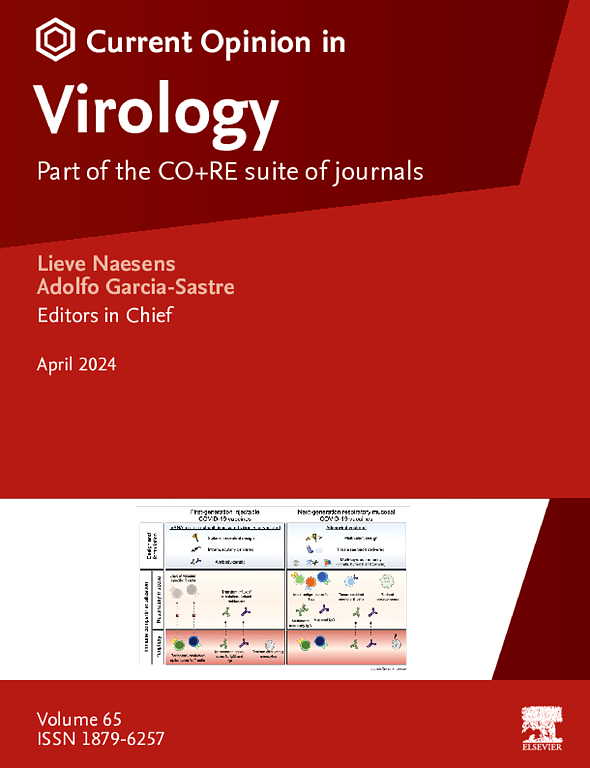The liver as a potential gate to the brain for encephalitic viruses
IF 5.1
2区 医学
Q1 VIROLOGY
引用次数: 0
Abstract
To model infection of viruses targeting the liver and the central nervous system, two-dimensional in vitro cultures rapidly show their limitations. Conversely, in vivo models do not easily allow the investigation of early events of the infection process. In between, ex vivo models, comprising mainly organoids and organotypic cultures, mimic or retain the cytoarchitecture of the organ while being relatively simple to handle and analyze. Here, we summarize the main features of brain and liver ex vivo models and pinpoint examples of their utilization for studying encephalitogenic and hepatotropic viruses. We highlight a gap of development and application of liver compared to ex vivo models in virology. Many hepatotropic viruses can also infect and/or have impacts on the central nervous system. In this sense, we sought to present these ex vivo models while providing a conceptual framework for the modeling of the hepatocerebral axis in the context of viral infections.
肝脏是脑炎病毒进入大脑的潜在通道
为了模拟针对肝脏和中枢神经系统的病毒感染,二维体外培养迅速显示出其局限性。相反,体内模型不容易允许调查感染过程的早期事件。在这两者之间,主要由类器官和器官型培养物组成的离体模型模拟或保留了器官的细胞结构,同时相对简单地处理和分析。在此,我们总结了脑和肝离体模型的主要特点,并列举了它们在研究致脑性和嗜肝性病毒方面的应用实例。我们强调了肝脏在病毒学方面的发展和应用与离体模型相比的差距。许多嗜肝病毒也可感染和/或影响中枢神经系统。从这个意义上说,我们试图提出这些离体模型,同时为病毒感染背景下的肝脑轴建模提供一个概念框架。
本文章由计算机程序翻译,如有差异,请以英文原文为准。
求助全文
约1分钟内获得全文
求助全文
来源期刊

Current opinion in virology
VIROLOGY-
CiteScore
11.80
自引率
5.10%
发文量
76
审稿时长
83 days
期刊介绍:
Current Opinion in Virology (COVIRO) is a systematic review journal that aims to provide specialists with a unique and educational platform to keep up to date with the expanding volume of information published in the field of virology. It publishes 6 issues per year covering the following 11 sections, each of which is reviewed once a year: Emerging viruses: interspecies transmission; Viral immunology; Viral pathogenesis; Preventive and therapeutic vaccines; Antiviral strategies; Virus structure and expression; Animal models for viral diseases; Engineering for viral resistance; Viruses and cancer; Virus vector interactions. There is also a section that changes every year to reflect hot topics in the field.
 求助内容:
求助内容: 应助结果提醒方式:
应助结果提醒方式:


